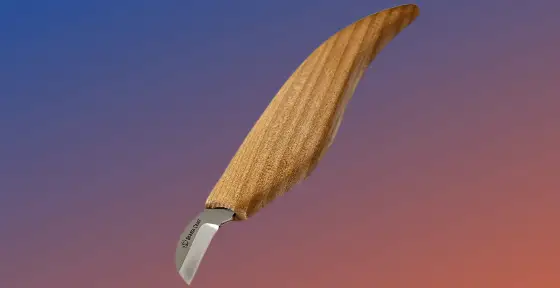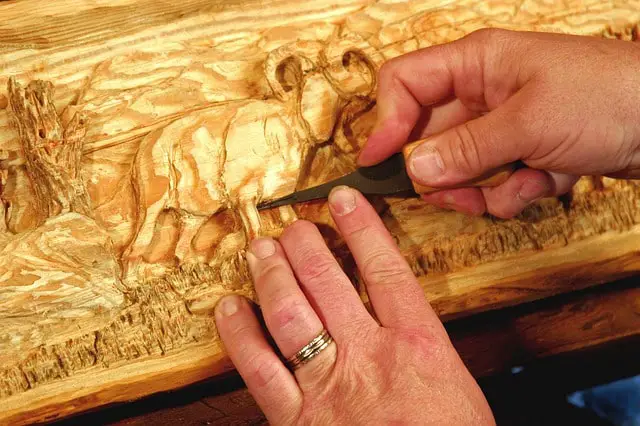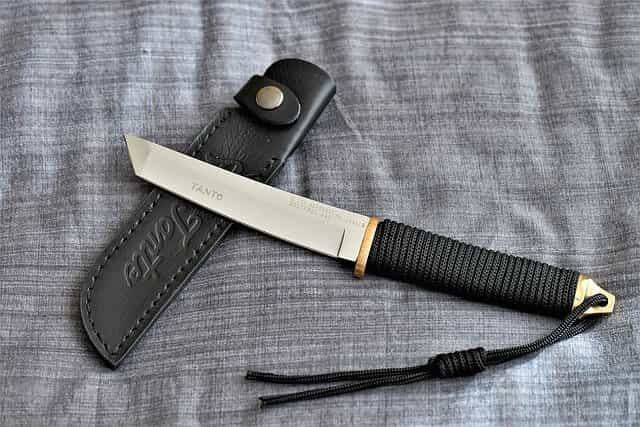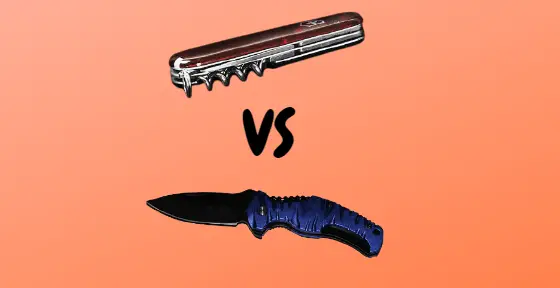Knives are a big part of the woodcarving industry and they can be used to generate different outcomes. For the best results, it is best to choose different types of knives that are well suited to diverse operations.
It is much like how you can use a chef knife for almost everything in the kitchen but it still helps to have dedicated knives (such as the paring knife, meat cleaver, etc) in some cases.
Today, we dig into some of the most important types of knives used in wood carving – and how you can choose them for yourself.
Table of Contents
What Are the Different Types of Wood Carving Knives?
I know that there must be quite a lot of them out there but these remain the standout knives to own as a woodcarver.
Chip carving knives
Many beginners will find success with chip carving before they move on to other forms of wood carving. The reasons for that are not far-fetched, given that chip carving provides:
- a learning opportunity to work with softer wood;
- less stress compared to other forms of wood carving; and
- a quick, pleasurable experience for beginners.
That is not to say advanced woodcarvers don’t use this kind of knives too, but they don’t do so exclusively. With them, the knife is best deployed to make precise and delicate cuts or designs on the wood they are working on.

The typical chip carving knife will:
- Have an elongated handle;
- Feature a short blade (1-1.5 inches in most cases); and
- Be ergonomically designed for better handling.
While they can be used with some type of hardwood too, you’ll mostly see these knives on softwood instead.
Bench carving knives
Bench knives are almost like chip knives but they can be used for more digging into the wood.
Like chip knives, they are also great for marking out details and making precise cuts. Unlike chip knives, though, the bench carving knives are suitable for removing a larger portion of the wood without losing attention to detail.

Typically, bench carving knives also boast:
- A long and large handle;
- A relatively shorter blade; and
- A more robust/ sturdy design.
These knives are beginner-friendly too but they will do the most magic in the hands of someone with slightly advanced skills.
Whittling knives
Whittling does not take just skill but a lot of patience to achieve what you want. That is why I don’t always agree when someone calls this a beginner skill.
Of course, it’s a fine skill to learn when you are getting into wood carving. However, it would take the duration of your passion or career in wood carving to master this simple art.
A whittling knife is, as the name implies, great for making shavings off wood to get the desired design. To make the effort and time more pleasurable, they are usually designed with:
- A slightly longer blade; and
- An ergonomic bolster on the blade

If your whittling knife doesn’t come with a bolster, you might have some difficulty making deeper shaves off the wood than if it had one. While whittling is best done on softwood, the method can also be applied to some hardwood with some skill.
Factors to Consider When Choosing Wood Carving Knives
Many guides tend to focus on overall wood carving tools, which is great, but that means they leave out the knives.
Being one of the most important tools you should have, here are a handful of things to consider when choosing one:
#1 The manufacturer of the knives
I prefer wood carving knives made in the USA over others.
This is not a bias thing since I love Japanese kitchen knives and use them as much as my German chef knives. However, when it comes to wood carving knives, you will find better success with American brands than those that were not made in the US.
#2 Ergonomic handling for both hands
Some beginners bought their knives only to find out that it was not intended for left-hand usage.
I know that the majority of the population is right-handed which explains why these brands might also not consider left-handed users. That is why you should take the time to look for those knives that sit well in your left hand too.
This is not just advice for left-handed users either. As a righty, there might come a time when you want to switch hands for whatever reason. You’d be glad you chose this kind of knife in that case.
#3 Tasks you need the knives for
For starters, chip knives should not be used to do the work of whittling knives, which won’t equally perform well as a bench carving knife. Identify the tasks you would use the knife for and get a dedicated knife to boot.
That said, there are different types of points on a knife – and the one you choose should depend on what you need it for. So even when chipping, carving, whittling or anything else, ensure you have the right point.
I have included a wood carving knife point guide below:

- A – best for making tight curves, slicing, and concave cuts.
- B – for more precise concave cuts and smaller details.
- C – great for carving. Can be used for chip carving when shorter or bulk carving when longer.
- D – deep cuts that don’t affect the edge. Great for feather scoring.
- E – best used on corners and curves.
- F – helps for faster wood removal, detail work, and getting into tight curves if narrower.
- G – great for carving hollow surfaces (such as spoons, bowls, etc).
- H – great for carving deeper hollow surfaces than G above.
#4 The edge retention on the blade
You don’t want a knife that dulls after just a few hours of usage. While wood is surely going to dull your carving knives at a faster rate than cooking knives, you still don’t want to worry about sharpening the blade every time you pick it up.
A better alternative will be to have a blade that can be regularly honed for use and sharpened less than 5 times a year, depending on how much you use it.
When you go with quality manufacturers, you are also treated to high-quality steel to get the job done.
#5 Full tang vs partial tang
In the anatomy of a knife, I discussed what the tang of the knife is and whether you want it to be full or partial.
For high-impact work such as wood carving, always go with full tang knives.
Even softwood is hard on knives and you need a blade that can hold its own well to handle such materials. Move to hardwood and you require something even more robust.
There is a high chance you get that with full tang knives, so stick with them when choosing your carving tools.
Can You Use Any Kind of Knife for Wood Carving?
Yes, but I doubt that you would want to do that. Let me give you an example.
You can use a small swiss army knife to cut BBQ ribs if you wanted to. However, you would neither get the precise cuts you wanted nor enjoy the cutting experience than if you had used an ideal knife for cutting BBQ instead.
So, while the former works, it is less than ideal and won’t bring out the outcome you want.
In other words, always stick to wood carving knives when you are carving wood, and you would thank yourself for that later.


![[Video] The Complete Whetstone Sharpening Guide for Beginners](https://cutsandcarves.com/wp-content/uploads/2021/05/Video-The-Complete-Whetstone-Sharpening-Guide-for-Beginners-768x644.jpg)





